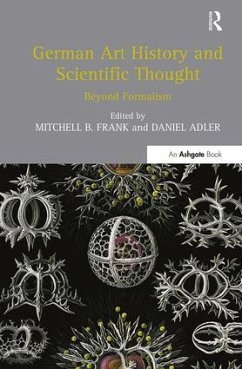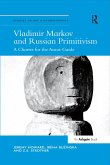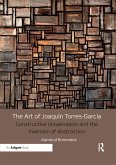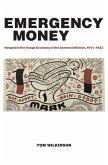A fresh contribution to the ongoing debate between Kunstwissenschaft (scientific study of art) and Kunstgeschichte (art history), this essay collection explores how German-speaking art historians of the late nineteenth and early twentieth century self-consciously generated a field of study. Prominent North American and European scholars provide new insights into how a mixing of diverse methodologies took place, in order to gain a more subtle and comprehensive understanding of how art history became institutionalized and legitimized in Germany. One common assumption about early art-historical writing in Germany is that it depended upon a simplistic and narrowly-defined formalism. This book helps to correct this stereotype by demonstrating the complexity of discussion surrounding formalist concerns, and by examining how German-speaking art historians borrowed, incorporated, stole, and made analogies with concepts from the sciences in formulating their methods. In focusing on the work of some of the well-known 'fathers' of the discipline - such as Alois Riegl and Heinrich Wölfflin - as well as on lesser-known figures, the essays in this volume provide illuminating, and sometimes surprising, treatments of art history's prior and understudied interactions with a wide range of scientific orientations, from psychology, sociology, and physiognomics to evolutionism and comparative anatomy.
'The essays in the present volume, even though they all focus on a particular case, help the reader to gain a broader insight in the exchange between science and art history... The cumulative insight the reader acquires from this volume is that the approach of art history to the sciences was all but a clear trajectory towards objectivity; it called forth an increasing subjective and sometimes holistic appreciation of visual experience.' Journal of Art Historiography
'Mitchell B. Frank and Daniel Adler have collected eight original essays in German Art History and Scientifi c Thought that convincingly move current historiographical debates 'beyond formalism', as promised in the subtitle...[their] contributions successfully turn formalism into close reading, and they might act as a reminder about how to supplement mere observation with critical interrogation.' Francesco Ventrella, Journal of the Association of Art Historians
'Mitchell B. Frank and Daniel Adler have collected eight original essays in German Art History and Scientifi c Thought that convincingly move current historiographical debates 'beyond formalism', as promised in the subtitle...[their] contributions successfully turn formalism into close reading, and they might act as a reminder about how to supplement mere observation with critical interrogation.' Francesco Ventrella, Journal of the Association of Art Historians








